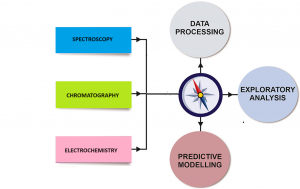
Understanding Patterns in Complex Chemistry Datasets: The Chemometric Approach
Chemometric analysis applies mathematical and statistical techniques specifically designed for data analysis. It provided analysis for model development, discrimination, and classification for various sample datasets. Notably in chemistry, different types of samples might provide different spectra or chromatograms from analytical analysis. The chemometric technique will extract the different information to individualize and classify the samples into its classes. This method is known as pattern recognition, and it falls into two categories: supervised and unsupervised.
Supervised pattern recognition is typically broadly utilized range of data and classifies objects based on their attributes using a training set that has been labelled into predefined categories. To further forecast the class of unknown data, a model is developed using samples from the known class. To put it another way, the idea was to build functions based on existing data from which conclusions about new samples could be drawn. Partial Least Squares Discriminant Analysis (PLS-DA), Linear Discriminant Analysis (LDA), k-nearest neighbour (kNN) and Artificial Neural Network (ANN) is the approach used in supervised pattern recognition for sample discrimination.
Conversely, unsupervised methods categorise data without the need for a predefined training set. Principal Component Analysis (PCA), which is the first stage in data analysis to reduce the dimension of the dataset without losing any information from the original dataset, is the primary unsupervised pattern identification technique. Cluster analysis, including K-mean and hierarchical cluster analysis (HCA), is also employed as a classification approach in instead of PCA.
For chemometric analysis, a variety of software is available. MATLAB, Minitab, Unscrambler, R software, Phyton, and many more. Chemometric analysis is a universal tool that can be used in many scientific fields, including biology, physics, and engineering, in addition to chemistry. Its versatility makes it such a useful tool for scientists and researchers across a range of subjects.
